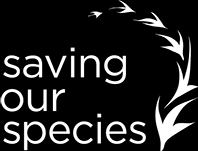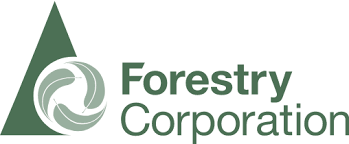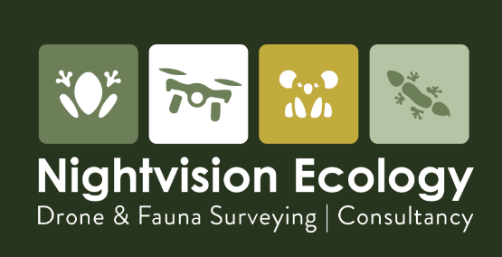Research and evaluation (Research projects)
Project R1: Integrating data to assess Coastal IFOA outcomes
 |
 |
Leading forest modelling scientists at the Western Sydney University and FlintPro have teamed up to improve approaches to integrate large and diverse datasets the program is now generating on an on-going basis – for example, forest structure and fauna occupancy. This work will lead to fit-for-purpose modelling and spatial capability to support cost-effective assessment of Coastal IFOA conditions and outcomes at multiple scales.
Project R2: Strengthening the evidence base to assess damaged trees
 |
At the 2022 Coastal IFOA annual health check, parties agreed to develop an evidence base to objectively assess the impact of injuries to retained trees during forestry operations. Currently there is no agreed understanding of the type and level of injuries that retained trees can sustain above which they are unable to provide the ecological function for which they were retained.
The types of retained trees included in the assessment are prescribed in the Coastal IFOA, such as hollow-bearing trees, nectar trees, giant trees, dead standing trees, Glossy Black cockatoo feed trees, Glider sap feed trees and Koala browse trees.
We engaged researchers from the Hawkesbury Institute for the Environment, Western Sydney University to review the scientific literature covering current knowledge of how trees respond to physical injuries to the stem and crown. The review also investigated recovery times and/or the impacts on tree longevity following damage.
Findings
Based on scientific literature, the researchers found trees impacted by mechanical injuries during forestry operations respond in similar ways to those trees impacted by fire, drought and storms. Trees either resprout from epicormic buds beneath the bark or from underground lignotubers depending on the species. Only a small number of eucalypt species cannot resprout following severe injury and rely on seedling regeneration to recover.
Based on this literature review and evidence from field observations, the researchers have assessed the risk to the ongoing function of retained trees due to different types and levels of injury. The researchers have set out an approach, including further field data to set objective injury thresholds for different types of injuries for retained trees as codified under the Coastal IFOA.
About the researchers
- Professor Brendan Choat is a national leading expert in plant physiology, specialising in quantifying physiological thresholds of tree mortality.
- Dr Rachael Nolan is a leading researcher in the new field of “pyro-ecophysiology”, working at the intersection of plant ecophysiology, fire ecology and forest fire management.
- Dr Eli Bendall leads field campaigns monitoring drought recovery of trees and post-fire tree mortality across south-eastern Australia.
Project R3: Reviewing the use of temporary log crossings in NSW coastal state forests
 |
The Coastal IFOA Monitoring Program includes annual health checks to consider the programs results and further opportunities to expand the evidence base to inform forest management. The 2021 health check initiated an assessment of the effectiveness of temporary log crossings in State Forests.
A temporary log crossing is where logs are placed in a drainage feature to enable the short-term passage of a machine or vehicle. There are knowledge gaps around how well their potential impacts on waterways are being managed.
The Steering Committee engaged Jacobs Group (Australia) Pty Ltd to review the use of temporary log crossings in NSW coastal hardwood state forests and the effectiveness of the current conditions for their design and rehabilitation in reducing their impacts on waterways.
Jacobs has delivered a report that:
- reviews published and grey literature on temporary log crossing design and use in NSW and other jurisdictions
- advises on the effectiveness of temporary log crossings compared with traditional causeway crossings
- suggests potential opportunities for adaptive management of the Coastal IFOA
- explores the costs and benefits of further research and proposes monitoring options.
Jacobs advised that temporary log crossings can reduce biophysical impacts compared to traditional causeway crossings in certain forest circumstances, thus improving outcomes for water quality and aquatic habitat. Jacobs identified potential amendments to the relevant protocol that would bring a range of temporary log crossing requirements into alignment with those applied to traditional causeway crossings.
The project was informed by multiple field visits and extensive collaboration with agencies, the Commission team and independent expert Dr Peter Hairsine.
Project R4: Koala response to harvesting
 |
 |
 |
Since 2019, researchers at the Australian National University, Western Sydney University and the Forest Science Unit at the NSW Department of Primary Industries have investigated how koalas, and their habitat responded to harvesting in state forests on the NSW North Coast.
The Commission has released as report synthesising the research findings. Overall, the research found the nutritional quality of trees is critical for koala survival and selective harvesting did not have an adverse impact upon koala numbers on surveyed north coast state forests.
More information on the program and the final report can found on the Koala Research page.
Project R5: Novel techniques to detect and monitor Hastings River Mouse
 |
 |
 |
 |
The Commission is partnering with the NSW Saving our Species program to test and compare the detectability of the Hastings River mouse using a range of novel survey methods and technologies. This will include testing the use of detection dogs and camera traps (with specific set-up for small mammals) against traditional trapping methods.
The use of detection dogs has been identified as a highly effective means of locating threatened, cryptic species, especially when traditional methods are unable to detect low‐density mammal populations. The Saving Our Species program is currently using detection dogs for small mammals such as the smoky mouse.
The first step in this project is to train a detection dog, as this will take up to 12 months before the research project can commence.
Miki, a six-month-old working cocker spaniel, started his training in April 2021 to become a Hasting River mouse detection dog. Miki is learning to recognise Hasting River mouse odour through the use of scats and bedding material collected from traps set by field ecologists from Saving Our Species and Forestry Corporation for NSW. Miki is also learning to discriminate between the odour of Hasting River mouse and other small mammals that he will encounter in the environment.
Video - Miki training to become a Hasting River mouse detection dog
Project R6: Drones to detect cryptic species
 |
 |
 |
The NSW Department of Planning, Industry and Environment are investigating the use of drones to improve detection for the cryptic koala and greater glider. Drones will be fitted with thermal imaging cameras and flown over Kalanteenee State Forest to provide information on the population density and distribution of koalas. These results will be compared to acoustic detection surveys being undertaken in the same area.
Working with Forestry Corporation for NSW, thermal imaging cameras will also be used in areas subject to spotlight surveys for the greater glider, with comparison of density estimates using the two techniques and ground validation in real time.
Surveys will be undertaken in winter 2022, when thermal differentials and the likelihood of detections are highest.
Project R7: Implications of changing fire intensity and regimes on Coastal IFOA objectives and outcomes
 |
- Final report - Risks to Coastal IFOA posed by fires (University of Wollongong, September 2021)
- Media release (October 2021)
The Coastal IFOA monitoring program committed to investigate the risks to achieving Coastal IFOA outcomes under changing fire regimes. The Commission engaged researchers at the NSW Bushfire Risk Management hub, University of Wollongong to provide independent research on the matter.
The research team evaluated:
- the specific risks to achieving the Coastal IFOA objectives and outcomes as result of the legacy landscape scale impacts of the NSW 2019/20 wildfire season
- the broad implications of predicted changing fire regimes on the achievement of the Coastal IFOA’s objectives and outcomes options to mitigate risks.
The researchers found:
- The 2019/20 fires impacted about 3.6 million hectares of forests across all tenures within the mapped Coastal IFOA region.
- Around 60 percent of the total state forest and national park area within this region was burnt, almost half of which was subject to high or extreme fire severity.
- Previous timber harvesting did not increase the fire extent or severity of the 2019/20 fires. However, there is potential for cumulative impacts in harvested landscapes that are subject to fire.
- The 2019/20 fires mean now only 10 percent of forested areas are currently within their recommended fire frequency thresholds.
- Half of state forest and national park area is now classified as ‘vulnerable’, meaning the 2019/20 fires effectively doubled the extent of vulnerable forested vegetation on these tenures.
- Under the climate change scenario of hotter temperatures and little change in rainfall, of the 24 assessed threatened species, seven species are predicted to have their habitat reduced by over 75% by 2070.
The University of Wollongong report is available here.
The data used in the analysis is available on the NSW SEED portal.
Project R8: Expert review of survey and models for Philoria frog species
 |
In their recent review of survey and modelling conditions and practices used in the Coastal IFOA, Dr Munks and Dr Bell identified several priority species for further attention including five frog species in the Philoria genus (for example the Mountain Frog, Philora kundagangan).
We engaged Dr. Michael Mahony at Nightvision Ecology and Honorary Professor at the University of Newcastle. Dr Mahony is a research scientist with over 30 years’ experience in Amphibian ecology. He will review existing habitat models and current survey methods for these five Philoria species, and provide advice on ways to improve survey and modelling approaches for each species.
A final report is expected in Mid- 2024.
Project R9: Expert review of bird survey methods and habitat models
Dr Munks and Dr Bell in their 2024 report outlined a review of habitat modelling and survey methods for multiple fauna species within the Coastal IFOA monitoring program. Species identified by the authors that require priority attention include the Marbled Frogmouth (Podargus ocellatus), Albert’s Lyrebird (Menura alberti) and the Rufous Scrub-bird (Atrichornis rufescens).
We engaged Dr Richard Loyn, Director of Eco Insights and Adjunct Professor with La Trobe University’s Ecology, Environment & Evolution school. Professor Loyn will provide recommendations to improve habitat models (if necessary), habitat descriptions and survey methods for these three species. Overall, the review will assess the accuracy of current habitat models (and potential data to improve) and survey methods.
A final report is expected August 2024
